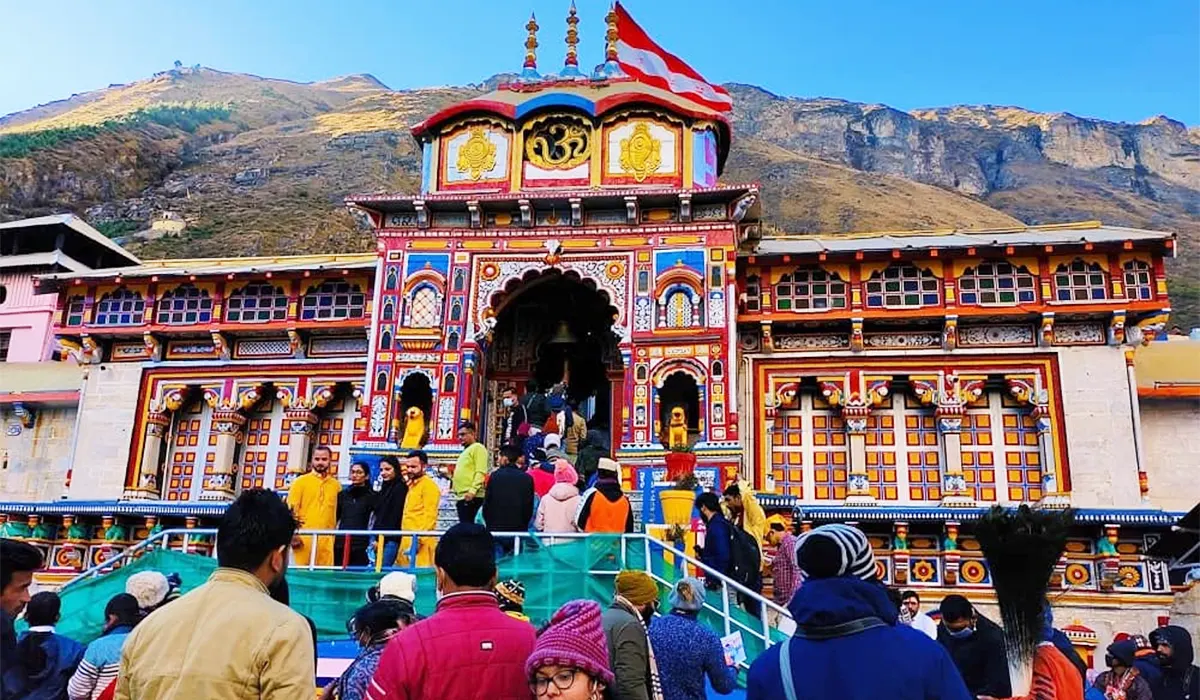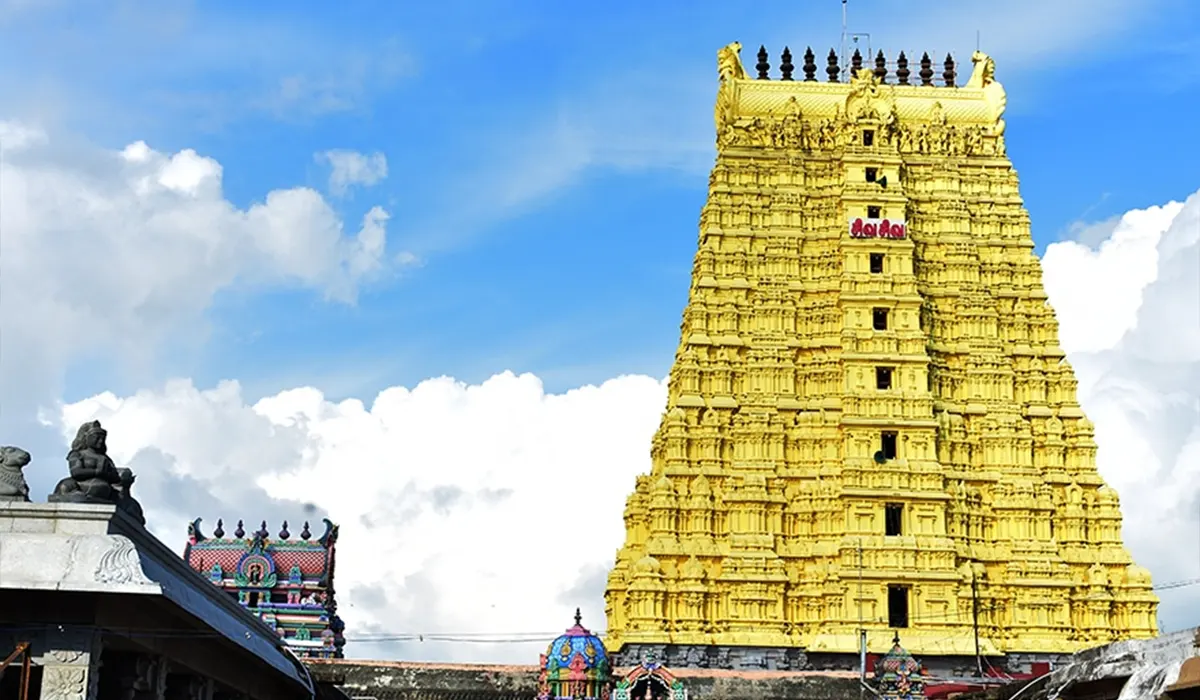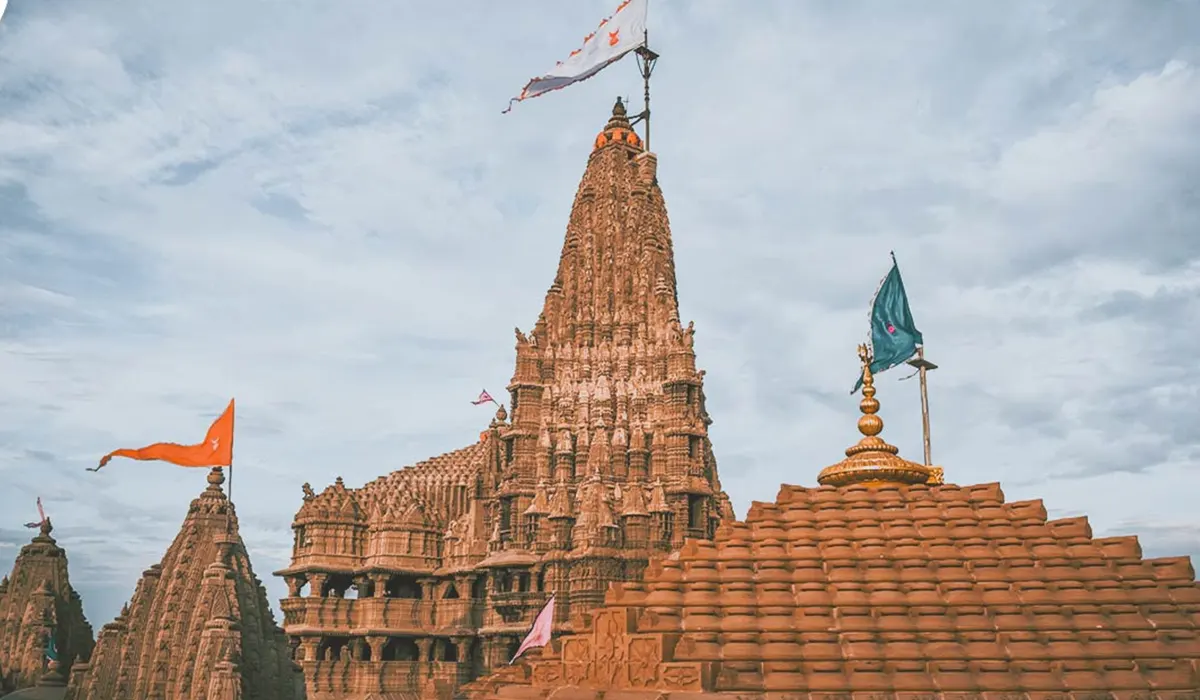Explore Our Cultural Tours – Visit Our Website Today! www.cosmosindiatours.com
Char Dham Yatra
The Char Dham in Hinduism refers to the four sacred pilgrimage sites, each representing a yuga (epoch) in the cycle of time, which is central to Hindu cosmology. These holy destinations—Badrinath, Rameswaram, Dwarka, and Puri—are considered the most revered spiritual journeys for devotees seeking liberation and connection with the divine.
The Char Dham pilgrimage is one of the most revered spiritual journeys in Hinduism, consisting of four sacred destinations—Badrinath, Rameswaram, Dwarka, and Puri. These holy sites are spread across the four corners of India, symbolizing the geographical and spiritual unity of the nation. The pilgrimage holds deep religious significance, as it is believed that visiting these sacred places helps devotees achieve moksha (spiritual liberation), cleansing them of sins and leading them closer to the divine.
Each of the Char Dham sites is dedicated to a different deity and associated with one of the four epochs (yugas) in Hindu cosmology. Badrinath, located in the northern Himalayas, is dedicated to Lord Vishnu and symbolizes the Satya Yuga, the epoch of truth. Rameswaram, situated in the south, is a key pilgrimage site for worshippers of Lord Shiva and is associated with the Treta Yuga, the era in which Lord Rama is believed to have lived. Dwarka, located in the west, is a city linked to Lord Krishna and is tied to the Dvapara Yuga. Finally, Puri, in the east, is home to the famous Jagannath Temple, representing the Kali Yuga, the current epoch.
Badrinath (Satya Yuga)
Located in the Himalayas, Badrinath is dedicated to Lord Vishnu and symbolizes the Satya Yuga, the first and purest epoch, known as the “Age of Truth.” Satya Yuga is a time of righteousness, where dharma (moral duty) prevails, and humanity exists in harmony with the universe. In this era, human beings are said to have been closest to divinity, embodying spiritual wisdom and purity. Badrinath, nestled between the Nar and Narayana mountain ranges, is associated with Lord Vishnu, who meditated here to sustain cosmic balance.


Rameswaram (Treta Yuga)
Situated in Tamil Nadu, Rameswaram is a temple dedicated to Lord Shiva and represents the Treta Yuga, the epoch of Lord Rama. Treta Yuga is an era when dharma begins to decline, yet great avatars like Rama incarnate to restore balance. Rameswaram is believed to be the place where Lord Rama, after his victory over Ravana in the epic Ramayana, built a bridge to Lanka and worshipped Lord Shiva to absolve his sins of war. This pilgrimage site signifies devotion, duty, and the power of penance.
Dwarka (Dvapara Yuga)
On the western coast of Gujarat, Dwarka, the city of Lord Krishna, signifies the Dvapara Yuga, the third epoch in the cycle of time. In this era, virtue and vice are balanced, and divine intervention is frequent to guide humanity. Dwarka is associated with Lord Krishna’s reign as king, where he ruled with wisdom and ensured justice. It represents the divine play (lila) of Krishna, his teachings in the Bhagavad Gita, and his role in the Mahabharata.


Puri (Kali Yuga)
In Odisha, Puri is home to the famous Jagannath Temple and embodies the Kali Yuga, the present age. Kali Yuga is characterized by the decline of morality, truth, and dharma, where materialism and strife dominate. However, Puri, where Lord Jagannath is worshipped, offers salvation even in this age of darkness. Lord Jagannath’s Rath Yatra (chariot festival) symbolizes the presence of the divine amidst the struggles of the current age, offering hope and redemption.
The Char Dham pilgrimage serves as a profound spiritual quest, combining the sacred, historical, and geographical significance of these four destinations. Over the centuries, millions of devotees have embarked on this pilgrimage, believing that visiting all four sites will help them transcend the cycle of rebirth and attain eternal peace. Beyond its religious importance, the journey offers pilgrims a chance to experience the rich cultural heritage, architectural grandeur, and breathtaking natural beauty of India, creating a holistic experience that connects the material and spiritual worlds.
Badrinath (Satya Yuga)
Located in the Himalayas, Badrinath is dedicated to Lord Vishnu and symbolizes the Satya Yuga, the first and purest epoch, known as the “Age of Truth.” Satya Yuga is a time of righteousness, where dharma (moral duty) prevails, and humanity exists in harmony with the universe. In this era, human beings are said to have been closest to divinity, embodying spiritual wisdom and purity. Badrinath, nestled between the Nar and Narayana mountain ranges, is associated with Lord Vishnu, who meditated here to sustain cosmic balance.
Rameswaram (Treta Yuga)
Situated in Tamil Nadu, Rameswaram is a temple dedicated to Lord Shiva and represents the Treta Yuga, the epoch of Lord Rama. Treta Yuga is an era when dharma begins to decline, yet great avatars like Rama incarnate to restore balance. Rameswaram is believed to be the place where Lord Rama, after his victory over Ravana in the epic Ramayana, built a bridge to Lanka and worshipped Lord Shiva to absolve his sins of war. This pilgrimage site signifies devotion, duty, and the power of penance.
Dwarka (Dvapara Yuga)
On the western coast of Gujarat, Dwarka, the city of Lord Krishna, signifies the Dvapara Yuga, the third epoch in the cycle of time. In this era, virtue and vice are balanced, and divine intervention is frequent to guide humanity. Dwarka is associated with Lord Krishna’s reign as king, where he ruled with wisdom and ensured justice. It represents the divine play (lila) of Krishna, his teachings in the Bhagavad Gita, and his role in the Mahabharata.
Puri (Kali Yuga)
In Odisha, Puri is home to the famous Jagannath Temple and embodies the Kali Yuga, the present age. Kali Yuga is characterized by the decline of morality, truth, and dharma, where materialism and strife dominate. However, Puri, where Lord Jagannath is worshipped, offers salvation even in this age of darkness. Lord Jagannath’s Rath Yatra (chariot festival) symbolizes the presence of the divine amidst the struggles of the current age, offering hope and redemption.
In conclusion, the Char Dham Yatra to Badrinath, Rameshwaram, Dwarka, and Puri offers a profound spiritual journey that traverses not only sacred landscapes but also the rich tapestry of India’s religious and cultural heritage. Each destination holds deep spiritual significance, symbolizing the connection between the divine and humanity across the ages. This pilgrimage is a transformative experience, allowing devotees and travelers to immerse themselves in ancient traditions, seek blessings, and renew their faith, making it a truly enriching and life-altering journey
Connect with Spiritual India Tour
Embark on a journey of inner peace and divine experiences with us. Whether you have questions about our tours, need help with bookings, or want to customize your spiritual travel itinerary, we are here to assist you every step of the way.

Subscribe newsletter $ get company news.
Welcome to Spiritual India Tour, your gateway to deeply immersive and transformative spiritual journeys across India.
Quick Links
Contact Info
- A127 First floor Sector 36, Noida UP 201303
Location
- © 2024 Spiritual India Tour All Rights Reserved.
Made with ❤️ by Bitstreaks Technologies
